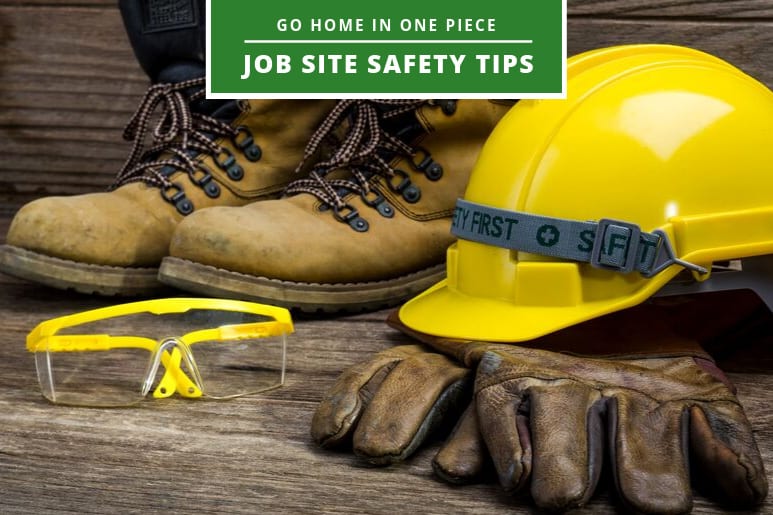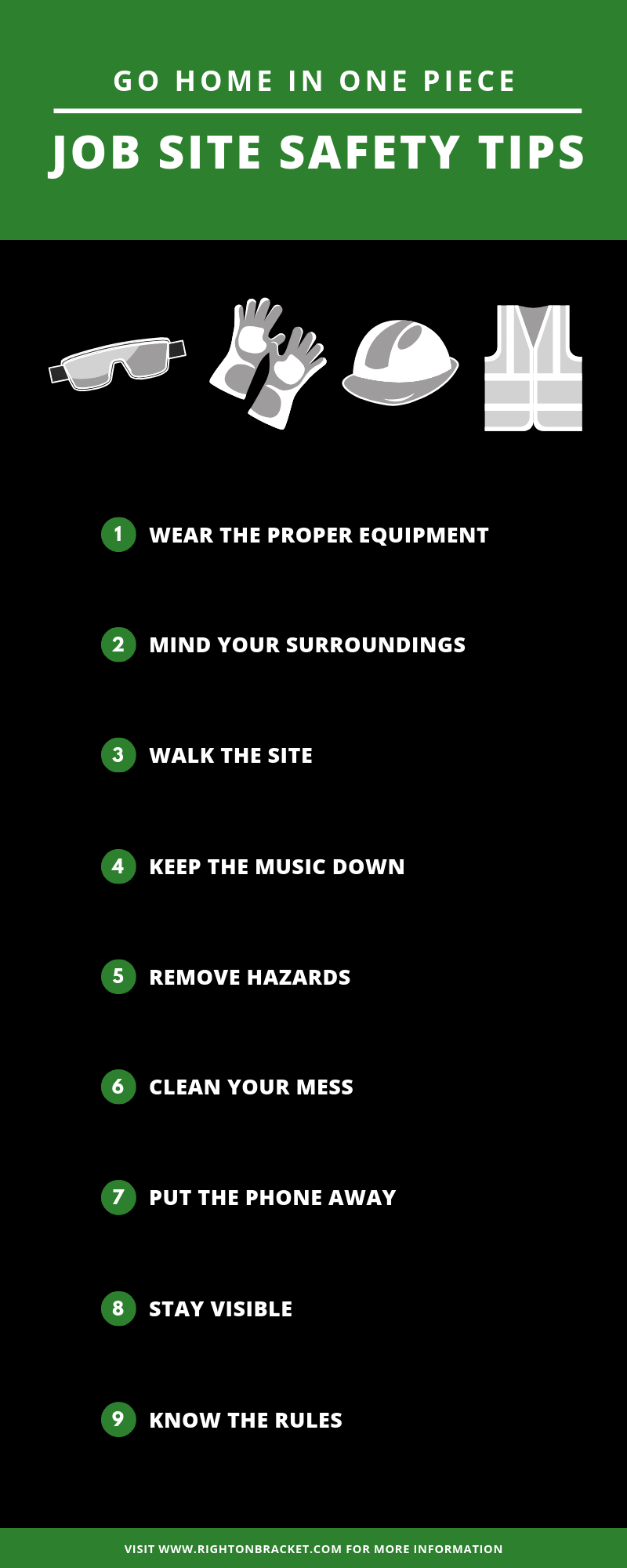
Go Home in One Piece | Job Site Safety Tips
Job sites have an inherent danger. Any time there’s a confluence of men, materials, and machinery, the chances for an accident increase. No one intentionally gets injured on the job, but accidents happen. By following some job site safety tips and rules, workers can mitigate the risk and get home in one piece.
Wear the Proper Equipment
Every job has personal protective equipment (PPE) that you must wear. There are OSHA and company standards you must adhere to on the job to protect yourself. A steel worker high off the ground has to wear safety harnesses to prevent falling. Welders wear welding masks to protect their eyes and skin from burns. The kind of work you do will determine what you should wear. A few standard pieces of safety equipment everyone should have includes the following:
- Safety glasses
- Gloves
- Hard hat
- Steel-toe boots
- Yellow safety shirt/vest
Mind Your Surroundings
Keep your head up and on a swivel. You want to know where you are, what’s in front of you, and what’s coming toward you. Unless you’re the only person on the job, there will be constant activity, and believe it or not, not everyone is looking at you. Watching for falling debris, heavy machines rolling towards you, and tripping hazards on the ground. Job sites are littered with trash and debris for you to trip and fall over.
Walk the Site
On the first day of the job, take a walk around the site, and get a lay of the land, literally. Every morning before the day starts, take a walk around the site. Learn what’s on the ground, what equipment the team will use that day, and identify any potential hazards. If you can remove the hazard, then do so. If it’s out of your control, though, warn the other members of your crew so they’re aware of the hazard too.
Keep the Music Down
If radios are permitted on the job, turn it on, but keep it down. It’s nice to have some tunes to make the day go by, but don’t let it distract you. The music can drown out other sounds that might be important. Loud music could stop you from hearing an approaching vehicle, and then you could step in front of it. Loud music can also drown out a warning about falling objects. It’s okay to have the music on at a reasonable volume, though.
Remove Hazards
Safety hazards are everywhere on a job site, and they come in many forms. Tripping hazards cover the ground, and there are falling hazards overhead. If you see something that can hurt you, go ahead and remove it. Don’t leave a board with nails sticking up laying around for someone to step on; bend the nails over. Keep extension cords out of the way as well. Run them as close to a wall or stationary object as possible, as this will lessen the chance of tripping over it.
Clean Your Mess
If there’s time to lean, there’s time to clean. Keeping the job site clean is everyone’s responsibility, so don’t feel like you must clean up after others. You have to clean up after yourself, though. If, for example, you just installed a massive granite countertop and there are extra granite shelf brackets, don’t leave them on the ground. Clean it up, and put them away. There are other people working on the job, and they deserve to have a clean place to work in just like you do. A clean site is a site free from safety hazards.
Put the Phone Away
Staring at your hands all day is not good for your health or career. Keep your phone in your lunch box or car. If you don’t have to take calls from the main office, other contractors, or a superintendent, then you don’t need your phone while you work. Some people on a job site field phone calls as a part of their role, so it’s understandable if they’re constantly on it. If your job doesn’t require it, you don’t need it. You can answer texts and return calls on breaks and during lunch. If this is difficult to remember, the foreman will remind you often.
Stay Visible
Staying visible on the job is extremely important. Don’t walk too close to heavy machinery. You will disappear to the operator and you will increase the chances of getting hit. Wear bright clothing, such as safety orange and safety yellow, so that all eyes are on you. When you approach a blind corner, round it out so that you come into view sooner. Anyone approaching that corner from the other side will notice you faster and will have a chance to alter their course. That goes for where you park your car or truck. Don’t park it anywhere close to a large piece of machinery. The assumption is that everyone knows this, so operators will move that big machine without looking behind it.
Know the Rules
Contractors or coworkers on a job will have their own safety rules that are just as important as the previous ones. You should try to abide by these safety rules too. They’re more like a code of conduct, or job site etiquette, and you want to follow these unwritten rules of the job. Breaking these rules can lead to physical and/or emotional injuries. Follow them, and stay safe from the other workers on the job. A few unwritten rules include the following:
- If it’s not your tool, don’t touch it.
- Don’t touch someone else’s food.
- Don’t check someone else’s work, especially if they’re watching.
- Clean boots and a hard hat mean “newbie”, so keep an eye on him.
- Don’t brag about your work, prove it.
- Don’t be afraid to ask why, but be prepared to hear “because I said so”.
- Never park behind equipment.
- Big and heavy always has the right of way.
- Never walk around with your hands in your pockets.
- If there’s time to lean, there’s time to clean.
- Always have a tool in your hand, it makes you look busy.
- If you borrow it, you’re responsible for it.
- Listen more, talk less.



